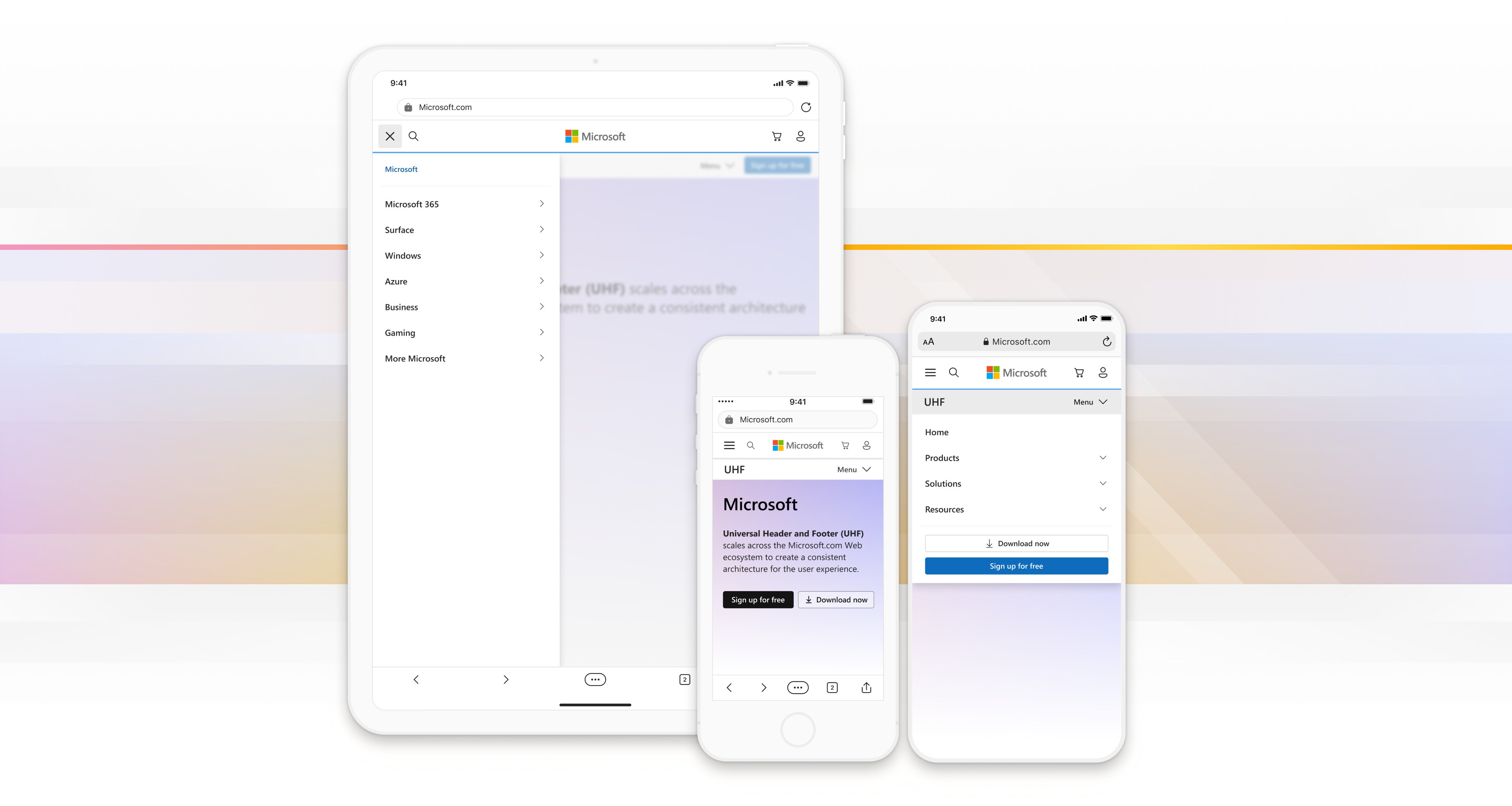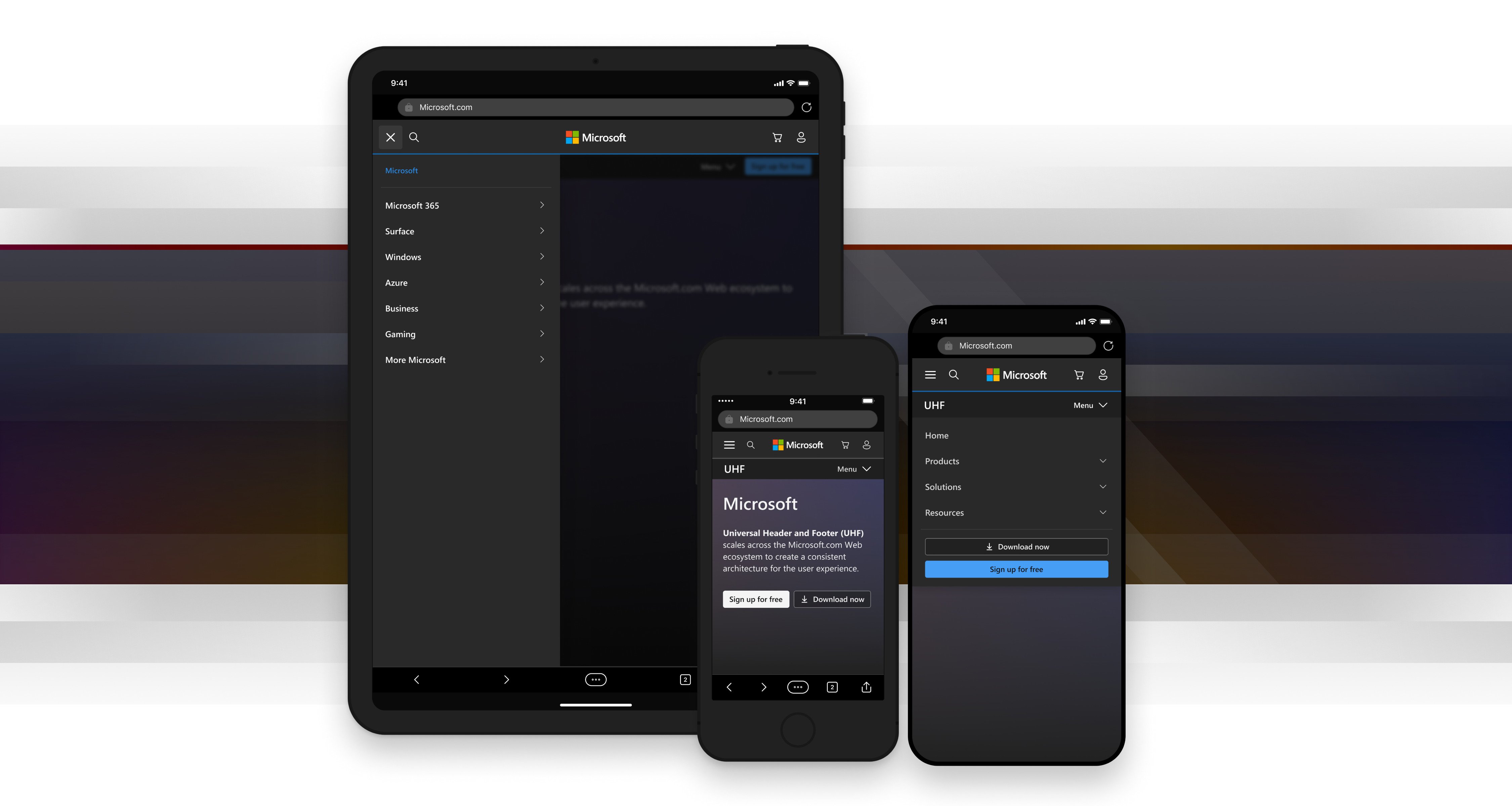Universal Header & Footer
Microsoft's Web ecosystem spans thousands of independently managed sites across multiple business groups (e.g., Surface, Azure, Xbox).
Over time, the divergence in business needs caused navigation inconsistencies across the ecosystem. These inconsistencies fragmented the user experience, undermined brand cohesion, and hindered discoverability.
The Universal Header & Footer (UHF) needed to be updated to reflect Microsoft’s evolving eCommerce strategy, AI integrations, and new design system—while preserving each group's identity and performance.
-
The goal
- Reflects users' mental models
- Simplifies information access
- Reinforces brand coherence
- Enhances user orientation and cross-site usability
- Balances consistency with business unit autonomy
To create a navigation experience that reflects users’ mental models, simplifies access to information, and unifies the brand across thousands of touchpoints—while still respecting the unique goals of each business group.
I created this prototype to show how the universal navigation we created allows customers to move easily across Microsoft.com sites, while the contextual navigation provides movement deeper into a site's content. I reinforced the structure with directional cues in the menu’s behavior.
Designed a scalable navigation system that unifies UX by creating a consistent mental model across Microsoft’s web ecosystem.
-
Understand users
- Identified lack of alignment between org-centric structure and user navigation goals.
- Reviewed user analytics and translated them into actionable insights and data visualizations that clarified user behavior trends.
- Defined meaningful user groups at scale based on information-seeking behaviors to guide IA decisions supporting diverse and goal-oriented navigation needs.
- Created heuristics for navigation behavior, focusing on usabilty, findability, and discoverability.
- Conducted a comprehensive UI audit of the existing navigation structure and identified points of fragmentation.
- Used competitive research to inform a pattern library that met both user expectations and business needs.
- Modeled scalable navigation hierarchies that balance business-wide access with deeper contextual pathways to support brand-level content.
- Prototyped a multi-layer navigation system:
- Universal navigation: A lateral menu that provides access to Microsoft’s top-level domains from any page.
- Contextual navigation: A vertical menu supporting deep dives into site-specific content.
- Explored polyhierarchical structures to surface key links in multiple categories, accommodating different user mental models (e.g., by product vs. by use case).
Define approach
Design solutions
We created a multi-layered navigation system that establishes a clear and consistent mental model for navigating across the ecosystem.
The current navigation relies solely on contextual menus that are different for each business group (see image below). The resulting lack of consistency across their sites makes for a confusing user experience with no clear mental map for customers to navigate by.
Problem
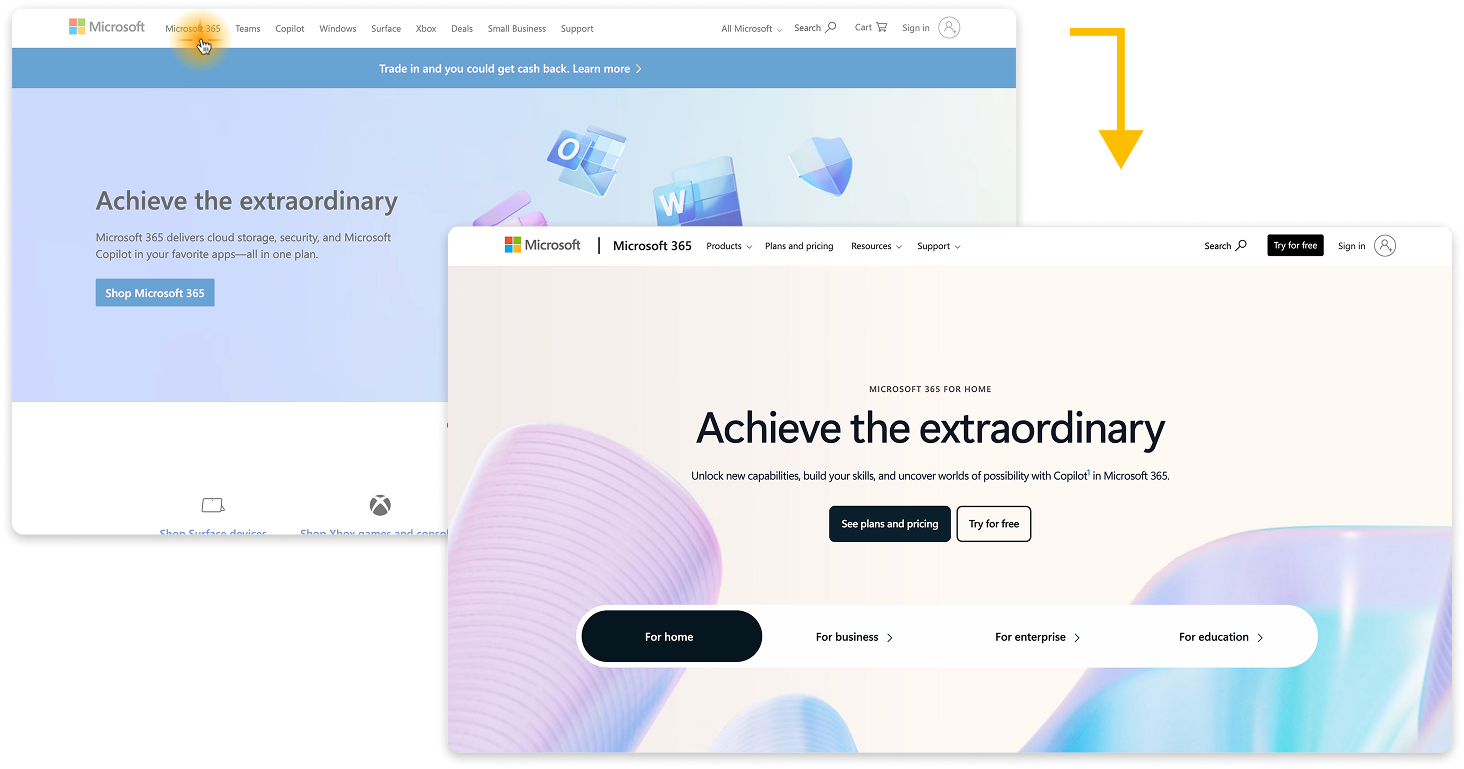
An example of fragmentation: the top menu updates to reflect each business groups content, but provides no links for cross-ecosystem browsing.
Given that the Microsoft web ecosystem spans thousands of independently managed sites across diverse product and service areas—the sheer volume of content and the range of user and business needs demanded more than a flat navigation structure.
Solution
As their e-commerce strategy evolves toward a decentralized marketplace, the ability of customers to move freely between business areas and explore multiple pathways could prove critical for the business. Having a common universal navigation could ease cross-site mobility and improve user orientation and discovery.
- Multi-level navigation system:
- Universal navigation: A lateral menu that provides access to Microsoft’s top-level domains from any page.
- Contextual navigation: A vertical menu supporting deep dives into site-specific content.
Why Multi-Level Navigation is Right for Microsoft:
- Scale & Complexity: Microsoft operates a vast web ecosystem (Surface, Azure, Xbox, Office, etc.) with thousands of pages, products, and services. A flat navigation structure doesn’t support cross-business user journeys.
- Autonomous Business groups: Each group has unique content and priorities. A multi-level system allows autonomy while maintaining consistency at the top levels of navigation.
- Diverse Audiences: From gamers to enterprise IT professionals, users have vastly different goals. A multi-tiered structure helps surface relevant paths for discovery without forcing all users through the same entry points.
- Unified Brand Experience: Despite different products, Microsoft aims to deliver a cohesive user experience. Multi-level navigation supports consistent interaction patterns while respecting domain-specific content.
- Evolving Strategy: With new initiatives (e.g., AI, cloud, commerce), Microsoft needs a flexible, future-proof navigation framework that can adapt over time.
Before
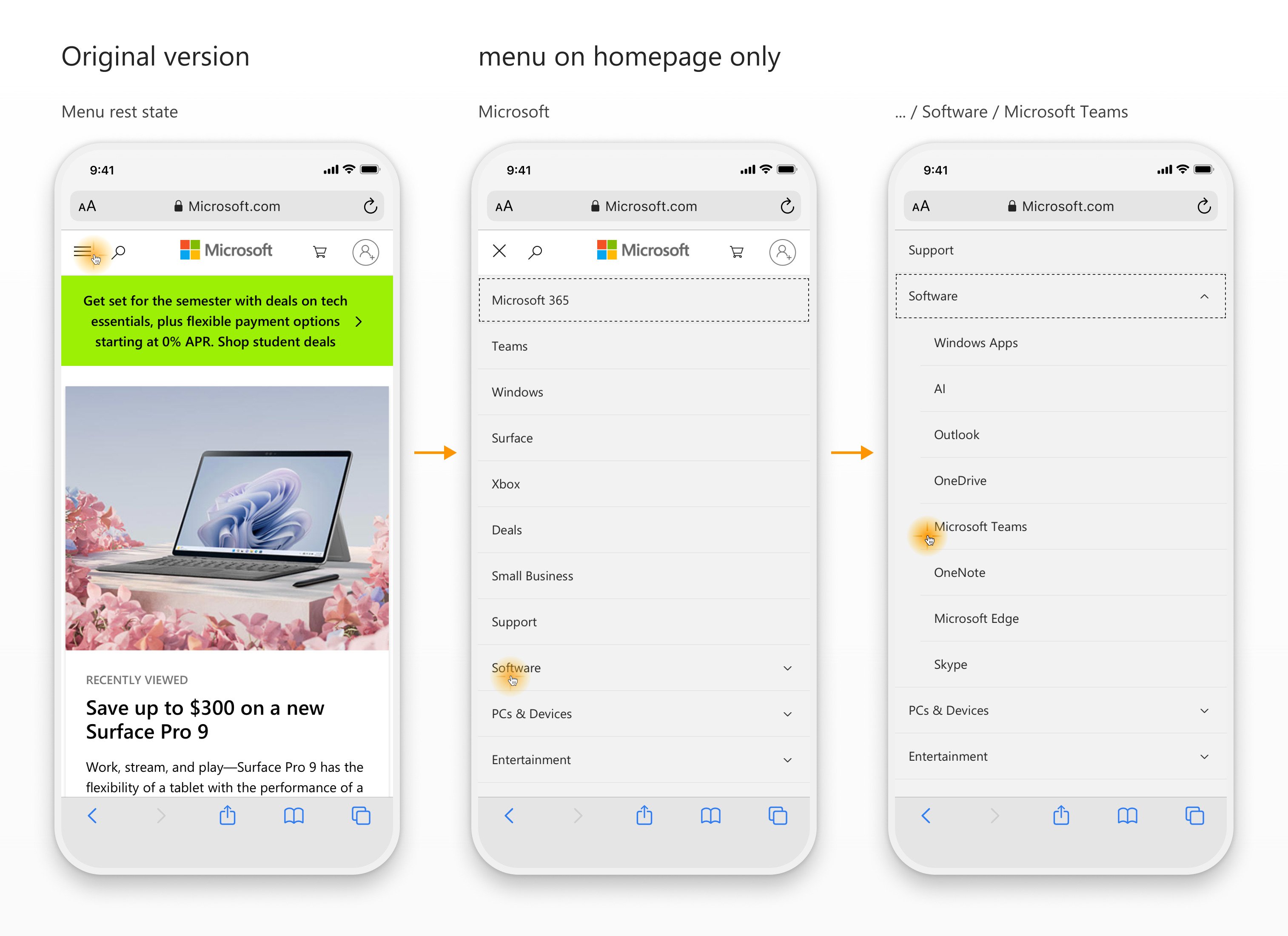
Microsoft's current navigation only provides top level options from the Microsoft.com homepage. (above) The updated version provides top level navigation options from every page of every site for a more cohesive experience. (below)
After
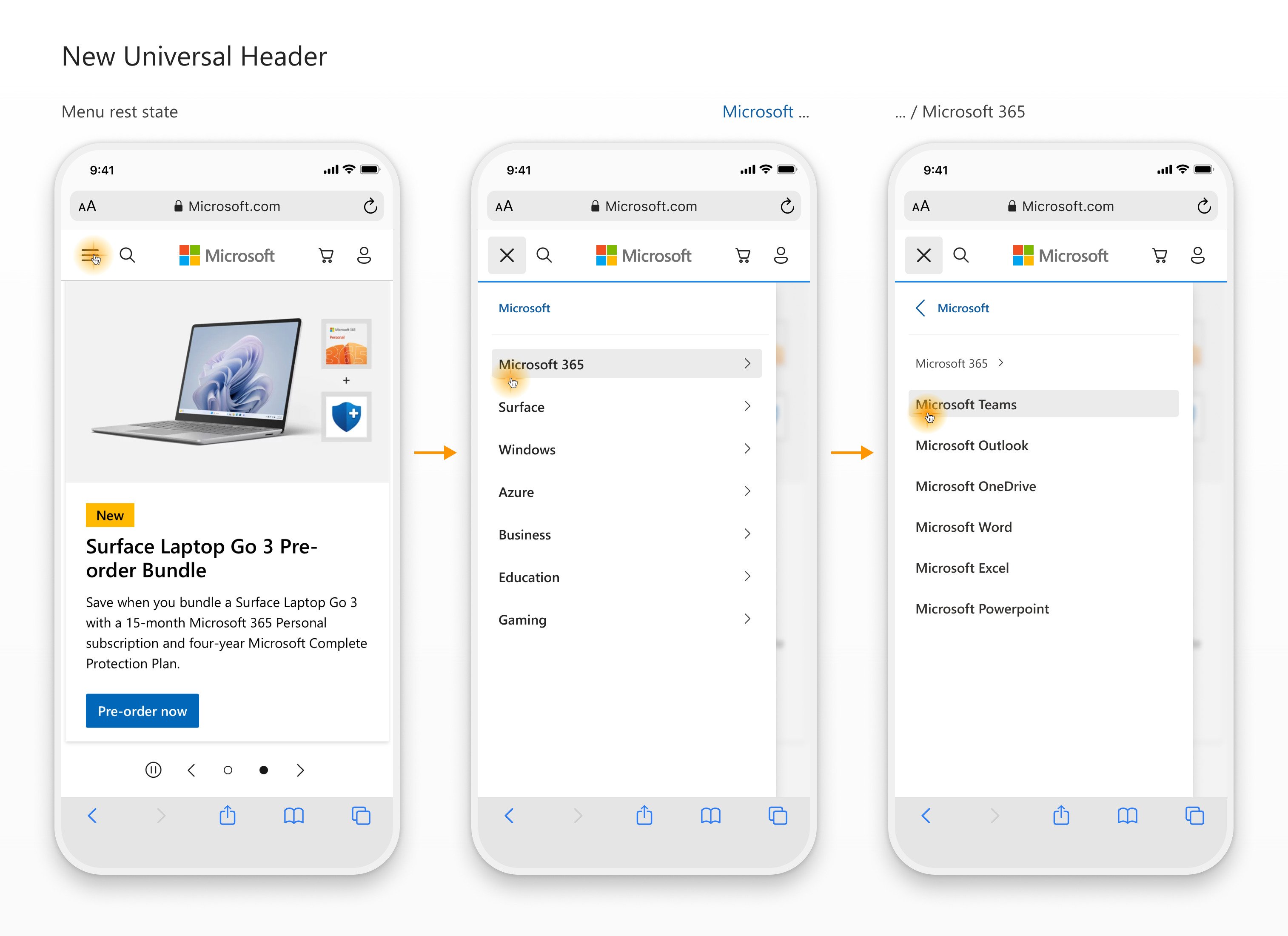
The universal navigation slides in from the right and moves horizontally over the top of the page content to reinforce both its place at the top of the hierarchy and that it affords broad lateral movement across the top pages of the site.
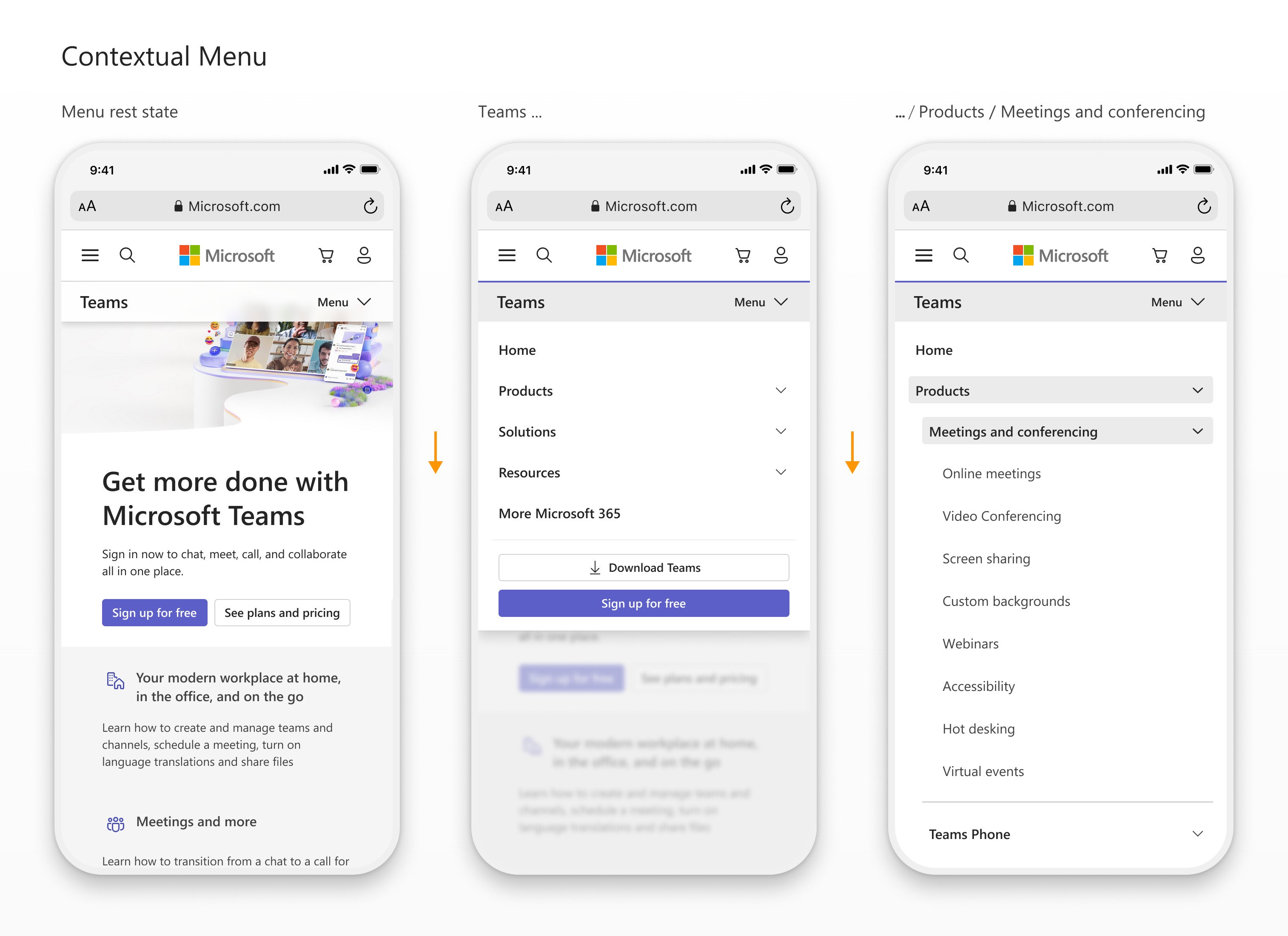
The contextual menu moves vertically to emphasize that customers are moving deeper into the site’s low-level subcategory content.
I structure information to reflect user mental models, behaviors, and expectations.
- Clear Content: Align labeling and categorization with users' mental models and maximize screen space for content.
- System Orientation: Make sure the user always knows where they are in the system.
- Intuitive Wayfinding: Leverage a user's previous navigation experience to reduce cognitive burden.
- Consistent Behavior: Menus should be easy to understand and work in a predictable and consistent way.
- Discoverability: Provide pathways for exploration with a clear means to advance, retreat, or search.
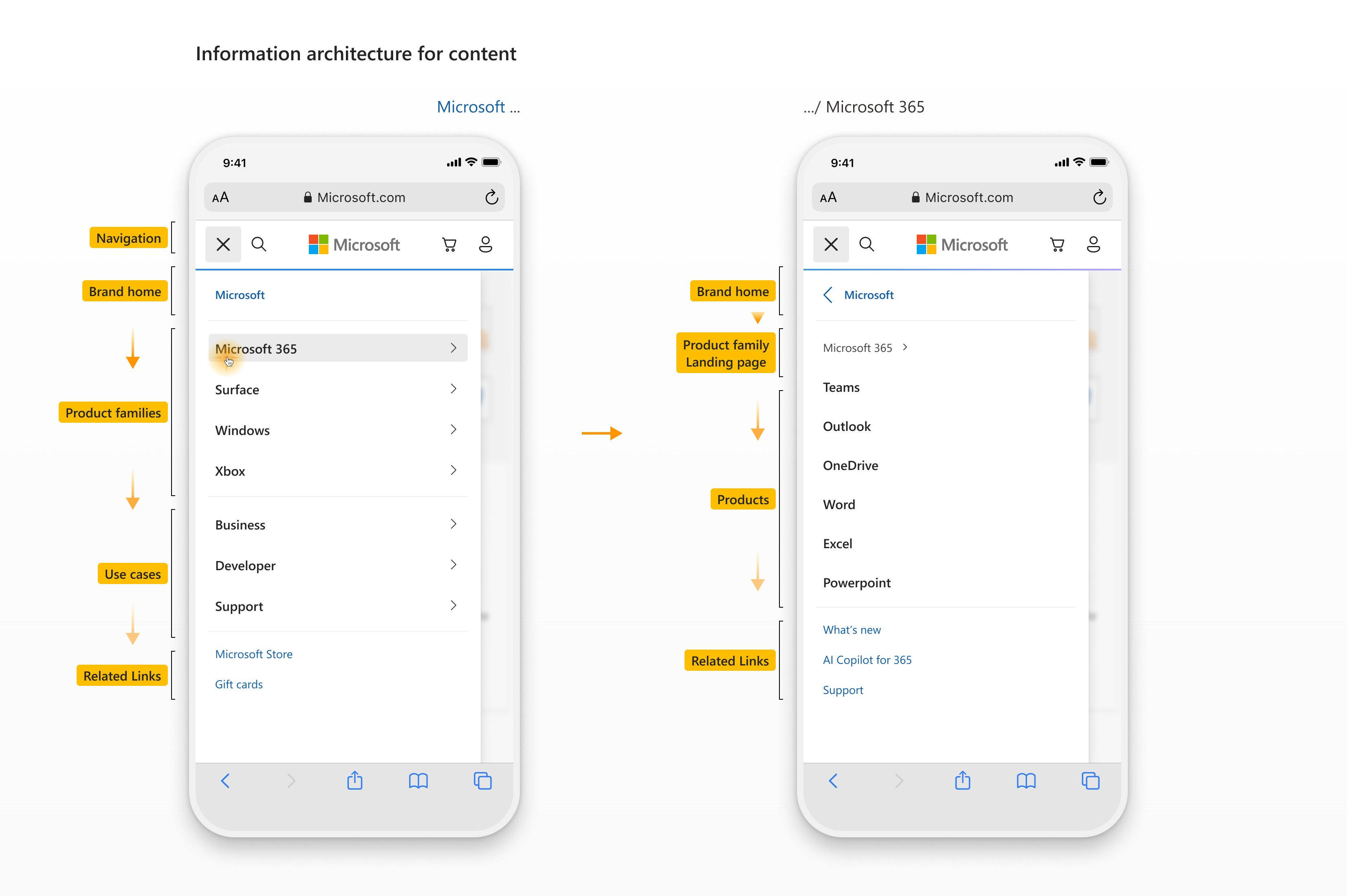
Brand home allows users to easily get to the Microsoft homepage from anywhere in the network. It also sets a tone of authority and cohesiveness for the brand. Related links provide convenience for accessing commonly sought content, like shopping links.
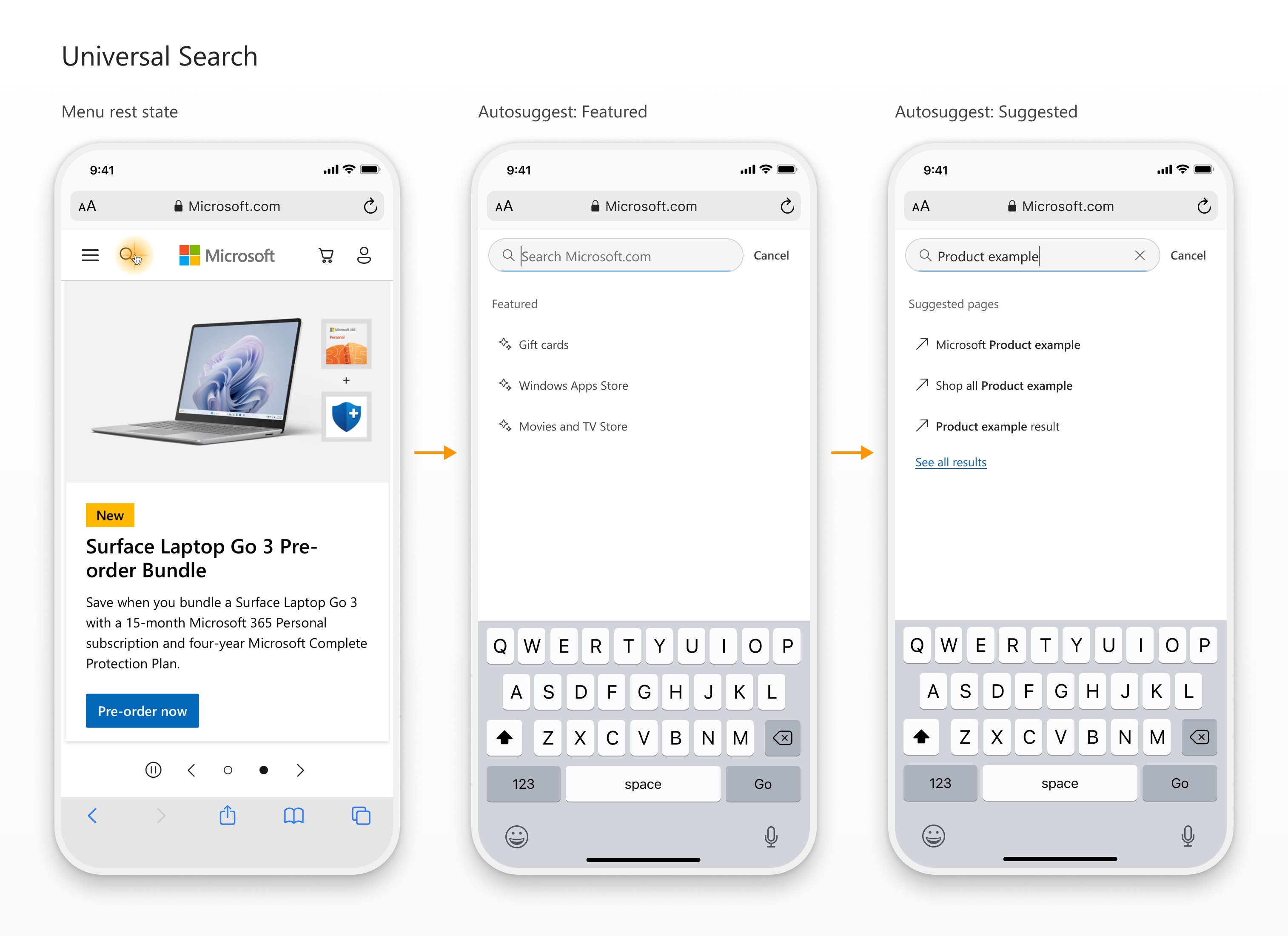
Utilizing a dissolve transition emphasizes that Search is non-directional and ensures that users can go to and from Search through a smooth visual transition regardless of on-screen content.
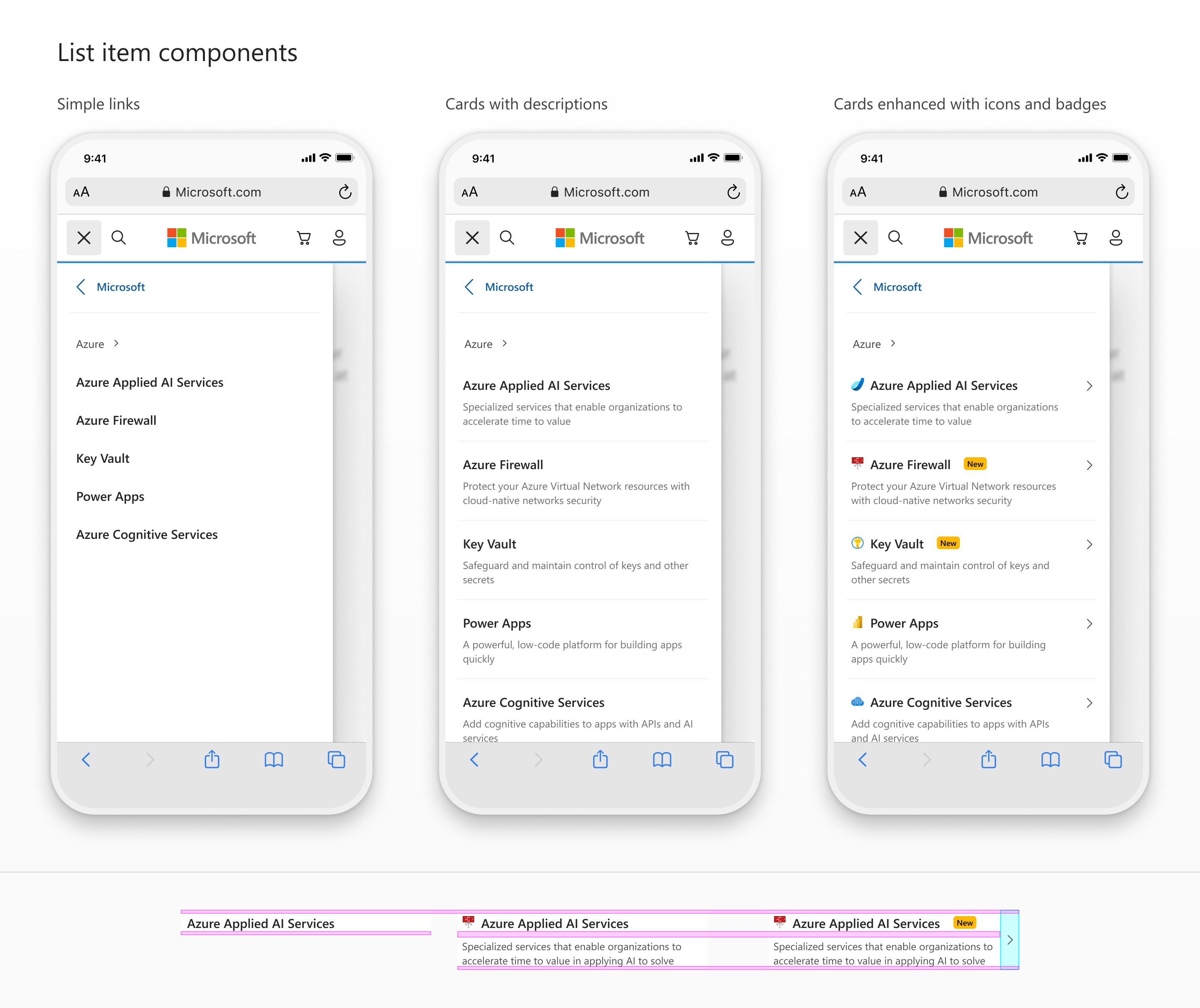
I designed a scalable list item component so that it can provide every required options by simply enhancing or degrading this single component.
I created a scalable component library to enable cross-team adoption and governance across Microsoft’s web platform.
- Partnered with product, accessibility, and engineering teams to align design with business constraints.
- Structured components using progressive enhancement, allowing for UI simplification or enrichment.
- Optimized accessibility patterns for skip links, focus order, keyboard control, and visual contrast.
- Authored detailed documentation covering mobile interaction, scalability, and accessibility patterns.
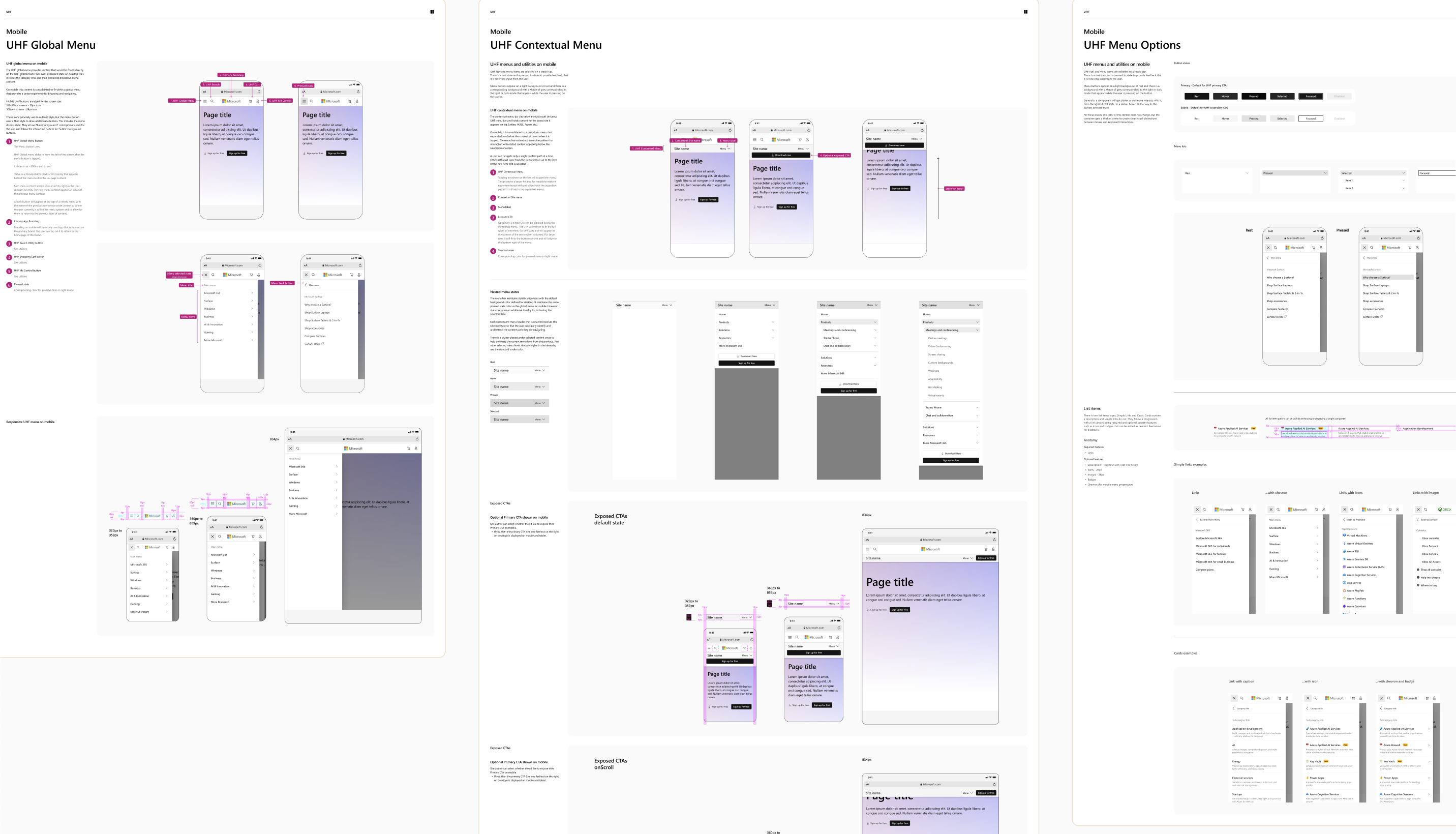
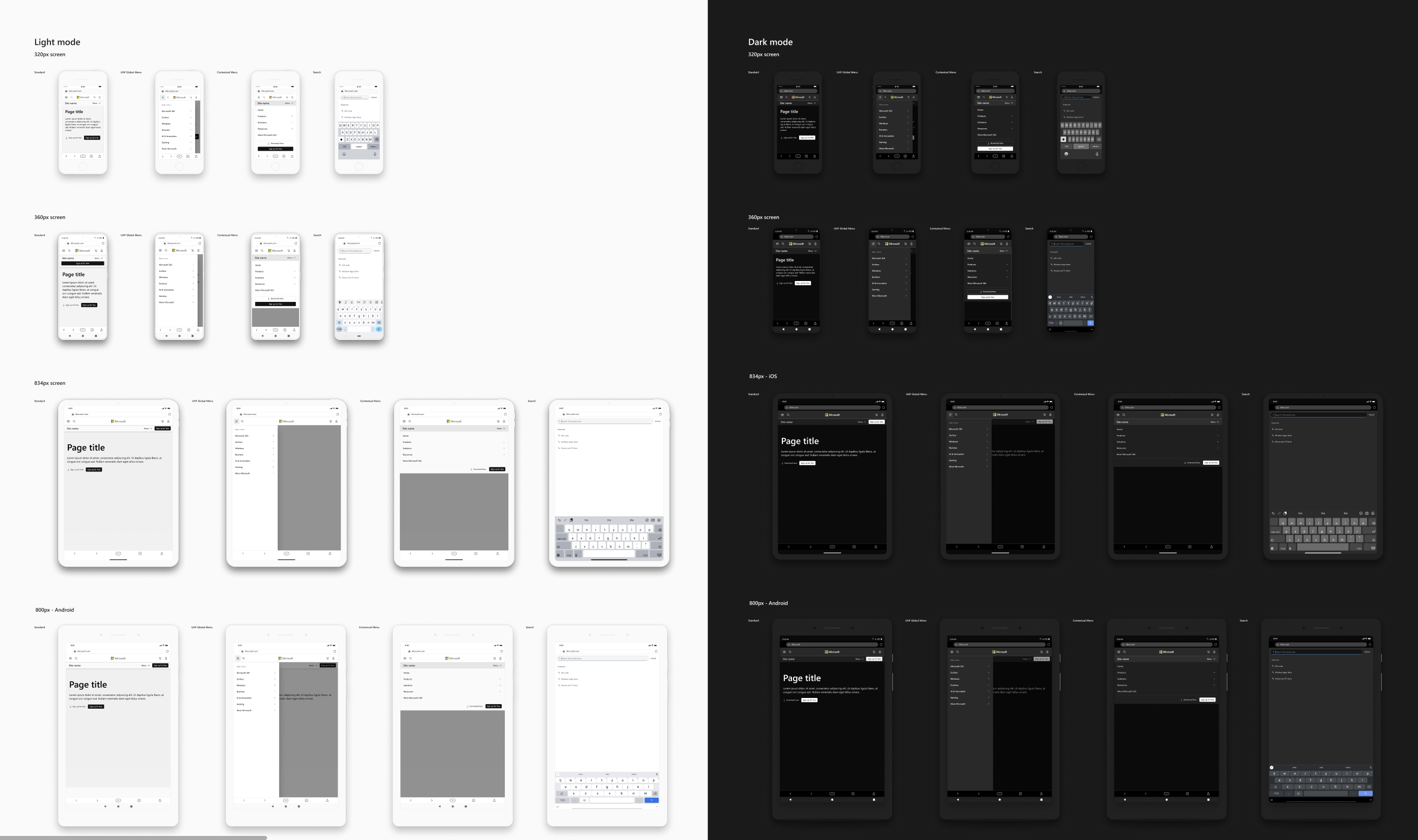
I created a robust design system for navigation patterns with detailed prototypes, components and annotations.
This project demonstrated the critical role of balancing business and user needs in enterprise UX.
While the design itself appears simple, it required navigating technological complexities, aligning with cross-functional teams, and collaborating closely with teammates to unify the navigation model across platforms to build a scalable and consistent pattern and component library to guide developers.
The success of this initiative reflects not only a tangible improvement in usability and consistency, but also sharpened my ability to think systemically at an enterprise scale and advocate for user needs while aligning with evolving business priorities—delivering a future-ready solution that will scale with Microsoft’s ecosystem for years to come.
